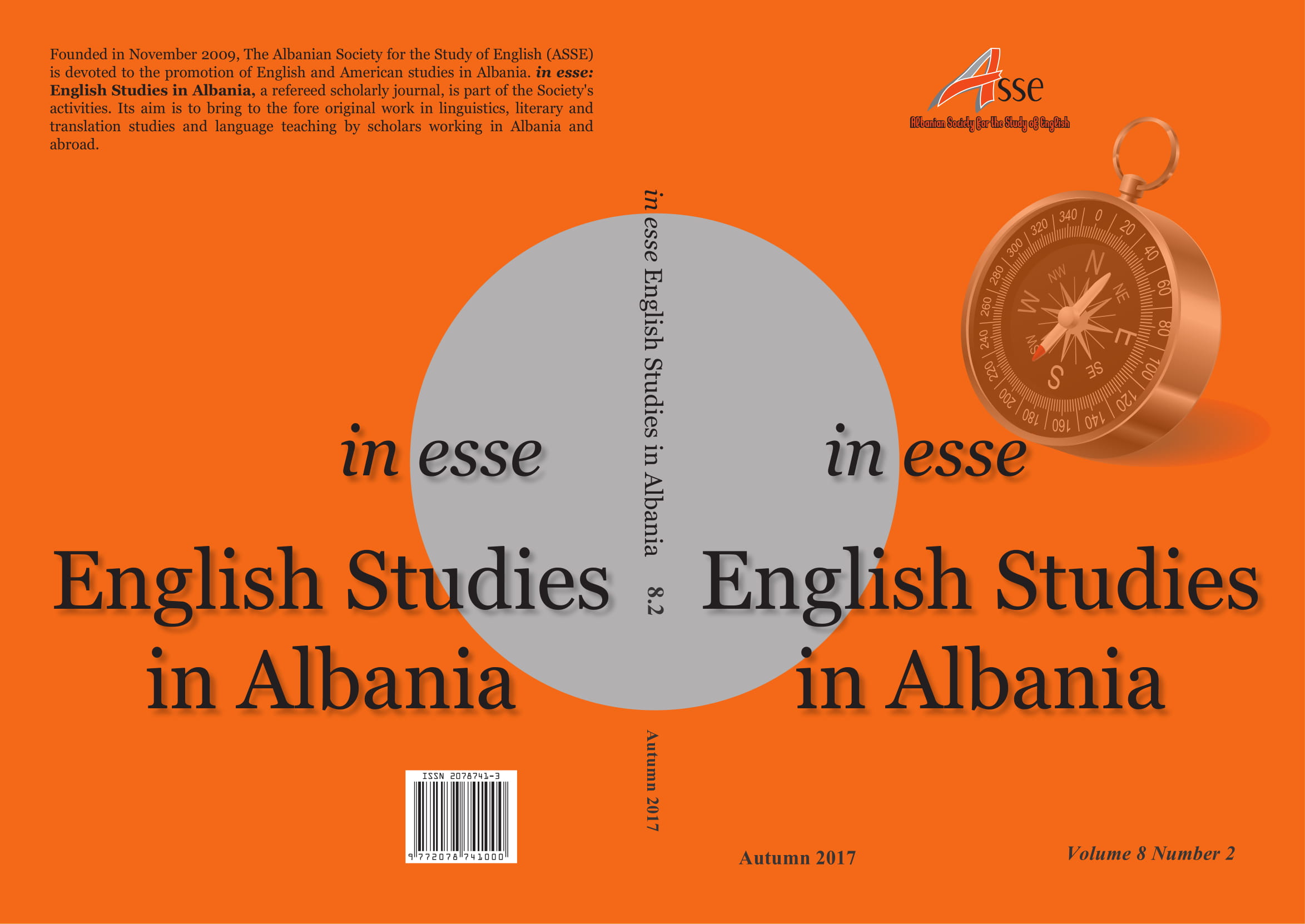“Dar-link, do you vant a kavitchka?” The Interplay of Language and Identity in Charlotte Mendelson’s ‘Almost English’
“Dar-link, do you vant a kavitchka?” The Interplay of Language and Identity in Charlotte Mendelson’s ‘Almost English’
Author(s): Fanni FeldmannSubject(s): Language and Literature Studies, Studies of Literature, Sociolinguistics, Migration Studies, Ethnic Minorities Studies, Theory of Literature
Published by: Albanian Society for the Study of English
Keywords: contemporary British fiction; language and identity; immigrant identities; ethnicity
Summary/Abstract: This paper analyses Charlotte Mendelson’s 2013 novel Almost English from the perspective of the relationship between and the interconnectedness of language and identity, and approaches issues of national, cultural and ethnic identities through language. The text is centred on questions such as how many generations it takes to blend into a culture as someone having outlandish origins. For how long is the offspring of immigrants considered as an nth-generation immigrant? When does a foreign past stop defining you and let you pass as a native? I argue that the novel—being the story of three Hungarian immigrant generations in England—depicts different variations of Englishness and Hungarianness. The key element of identity construction as depicted by the text is language, more precisely the ability to use or even recognise the Hungarian language, which is present in the text as a marked language. The main difference between the generations and their assimilation is based on the proximity of how close one has to listen to in order to find anomalies in their language use and therefore their identity. I point out how different identity strategies are underlined by the development of a multiethnic, multicultural, partly multilingual identity in the representative of the third generation. By the end of the novel the binary opposition of being either English or Hungarian is superseded by the text and a new, hybrid identity is being formed.
Journal: in esse: English Studies in Albania
- Issue Year: 8/2017
- Issue No: 2
- Page Range: 41-60
- Page Count: 20
- Language: English

